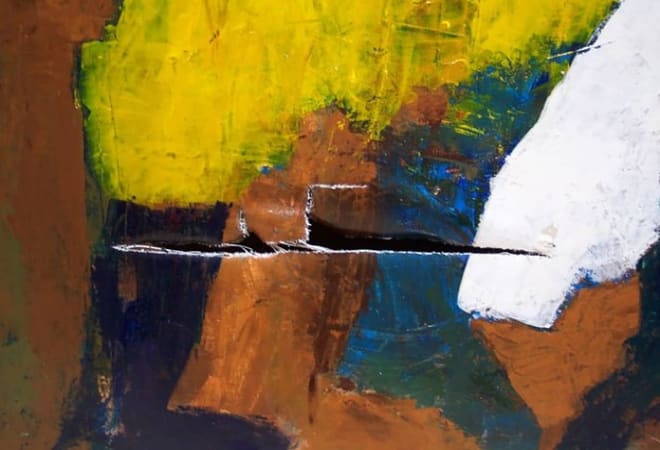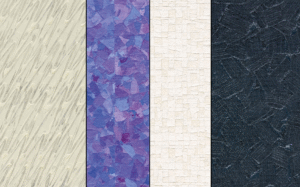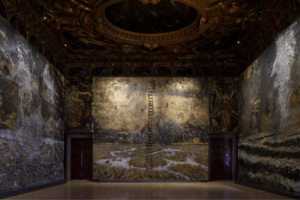Luck has a mind of its own, and sometimes it just happens to be terrible, be it a spill or an accidental rip or something entirely different; a lot of artists end up damaging their art, whether it’s a painting or sculpture. If this happens to you, what should you do? This post will explore some options and give examples of when each is appropriate.
Breathe
The most relevant rule in this type of situation is not to rush. Instead, take a deep breath, try to stay calm, and assess the problem with a clear mind. You’re not alone, and there’s nothing wrong with your art or yourself. Realize your options, try to visualize the damage, and see what the actual situation is. Once the problem has been adequately assessed, you can decide on what you’re supposed to do. Should you repair the piece so that it can be sold at full value? Should you let it go and only keep the memory of your work as a reminder? Or should you choose the third option: selling it damaged as you believe it gives the piece more character? All of this depends on how you feel, and the only proper way of dealing with the situation is one that you deem right.
When you damage your art, it can be a difficult call to make. Many factors will contribute to this decision, but one thing is sure: there is no right answer for everyone. If the artist is not someone who wants to resell their pieces or if they believe in something called “art karma,” then repairing may not be an option. If repairing does become necessary, there are some things that artists should know before attempting to fix a damaged piece; here are steps to follow if this happens to you:
- Look over all the damage carefully and take note of what can be salvaged before doing anything else.
- Take pictures as evidence for insurance purposes, especially if it’s outlined in the replacement cost policy.
- Set up any necessary repairs with someone who has experience with this type of thing (a friend, family member, or an expert on the matter, you may know).
- Fix whatever is salvageable first and then move onto the more challenging parts.
Reach Out
Maybe the best way to handle a situation such as this is to reach out to other artists, check out what the price would be with the damage in place, and see if anyone has any ideas of how you should repair it or which route you should take. Many different opinions are always better than a singular one, and they can create opportunities and open up new ideas to pursue. Making a choice through conversation with like-minded, unbiased people is a much easier process than just trying to figure the situation out on your own. Seeking out someone who understands what happened and who might even sympathize with you experiencing something similar in the past could give you just the information you need to make the right call.
Reaching out to other artists isn’t only a great option to see how to handle the situation but also a great way to gain peace of mind and soundness of soul. Conversing with people is sure to relax you and help you think more clearly, drastically impacting the quality of your decisions.

Wait
If you are unsure how to handle the situation at hand, you can always wait for someone with greater expertise to take a look. If you choose to take this kind of action, the first step should be protecting the art from further damage. Regardless of how the damage occurred, it’s easy to damage an already damaged piece. Therefore it would be wise to make sure this doesn’t happen. The only way to be sure is by isolating it in a safe place where nothing else could happen. It doesn’t matter if that place is a closet, a box, or an actual chest; as long as the piece is out of harm’s way, you’ve done your part.
After the art is secured and a professional is called, all that’s left is to wait. Once they come, they can assess the situation and tell you exactly how to handle the problem. This way, you save time and effort by simply going straight to the right answer instead of looking for it through numerous consultations and potentially even more mistakes.
Mend
If you decide that the best choice of action is to fix the piece of art, then the entire process is different. You need to make sure you have what you need to perform the task at hand. Other types of art are mended in different ways, and individual types of damage are remedied with various fixes.
Paintings are delicate pieces of art that can easily be damaged, for example, by direct contact with water. What should you do when you damage your painting? If the damage is not too bad and you want to repair it, you can try to fix it with a paintbrush and some water. You will need to work quickly as the paint dries fast on canvas or paper. For more complex issues, consult an expert like a curator at a museum or gallery specializing in your type of artwork for advice on how best to proceed.
Sculpting offers an entirely new challenge when rectification of errors comes to question. If the piece is a sculpture, choosing the proper pins for strength, drilling accurately on both sides of the break lines, using the suitable bonding glue, utilizing adequate filler adhesives, concealing the repair lines, and conserving the repair regions are critical factors to solving the problem. Attaching the broken pieces with glue can be challenging to handle; therefore, it’s wise to consult someone experienced in this area.

Leave It As Is
You might decide that the best way of handling the situation is to leave it as is and move the piece with the damage still in place. If this is the case, the most relevant aspect would indeed be fellow artists’ opinions. Pricing a damaged piece isn’t an easy thing to do, especially if you’re the one who caused the damage. Therefore, you might be increasingly biased towards the work. Consulting with others, taking pictures, and showing what occurred could help create a fair deal while still being cost-effective. Deciding on the value of a damaged piece can also help determine what to do with it; in some cases, a damaged piece can be of higher value, as it is unique in its own way.
Insurance
Insurance for artists is a good idea: vandalism, property damage, natural damage, or an accident might be covered through a policy. Insurance companies and their services can offer the best of both worlds, providing coverage for the damage and allowing you to take different courses of action. If the damage is covered, deciding what to do next becomes much simpler as it takes away some of the more material factors. Replacing broken frames or any other possibly damaged parts is much easier if it’s under insurance coverage, as it can cover almost any form of art.
Although handling damaged art might seem insurmountable, the most important factors of successfully managing the situation are relatively simple to remember. The most important step is to stay as relaxed as possible. Achieving peace of mind can make all the difference and help in calling the right shots at the right times. Something else to remember is that the more opinions you receive on the issue, the higher the odds are that you’ll get through the crisis and end up happy with the results you wanted to see. But in the end, the most important thing to remember is that your art is yours; there are no real right or wrong choices to be made. There is only the goal you set for yourself and whether or not you reach it. Regardless of the outcome, the piece is still your creation, and you can choose what you wish to do with it, just make sure to do so with a clear mind; that way, you’ll probably be happy with any outcome as you’ll be able to choose the most realistic one that will also leave you in a positive mood.
If you want to share your experiences or learn how to fix artwork you feel you’ve destroyed, be sure to visit ARTDEX, as it is a place where artists and art lovers can gather and learn together!







